- News
- Reviews
- Bikes
- Components
- Bar tape & grips
- Bottom brackets
- Brake & gear cables
- Brake & STI levers
- Brake pads & spares
- Brakes
- Cassettes & freewheels
- Chains
- Chainsets & chainrings
- Derailleurs - front
- Derailleurs - rear
- Forks
- Gear levers & shifters
- Groupsets
- Handlebars & extensions
- Headsets
- Hubs
- Inner tubes
- Pedals
- Quick releases & skewers
- Saddles
- Seatposts
- Stems
- Wheels
- Tyres
- Tubeless valves
- Accessories
- Accessories - misc
- Computer mounts
- Bags
- Bar ends
- Bike bags & cases
- Bottle cages
- Bottles
- Cameras
- Car racks
- Child seats
- Computers
- Glasses
- GPS units
- Helmets
- Lights - front
- Lights - rear
- Lights - sets
- Locks
- Mirrors
- Mudguards
- Racks
- Pumps & CO2 inflators
- Puncture kits
- Reflectives
- Smart watches
- Stands and racks
- Trailers
- Clothing
- Health, fitness and nutrition
- Tools and workshop
- Miscellaneous
- Buyers Guides
- Features
- Forum
- Recommends
- Podcast
review
 Cycliq Fly12 Sport front bike light
Cycliq Fly12 Sport front bike light£299.00
VERDICT:
Simple to use and does what it's designed to very well
Quality footage
Easy to use
Decent daytime light
Not too bulky
Run-times not outstanding, particularly in cold weather
Non-replaceable battery
Weight:
151g
Contact:
At road.cc every product is thoroughly tested for as long as it takes to get a proper insight into how well it works. Our reviewers are experienced cyclists that we trust to be objective. While we strive to ensure that opinions expressed are backed up by facts, reviews are by their nature an informed opinion, not a definitive verdict. We don't intentionally try to break anything (except locks) but we do try to look for weak points in any design. The overall score is not just an average of the other scores: it reflects both a product's function and value – with value determined by how a product compares with items of similar spec, quality, and price.
What the road.cc scores meanGood scores are more common than bad, because fortunately good products are more common than bad.
- Exceptional
- Excellent
- Very Good
- Good
- Quite good
- Average
- Not so good
- Poor
- Bad
- Appalling
The third generation Cycliq Fly12 Sport front camera is a great bit of kit. I've been impressed with the ease of use and quality of footage. It does almost everything you'd want from an 'incident-capture' camera, only failing on occasion at night. While the light has lost a few lumens from the previous iteration, this means the unit is smaller and lighter than ever before. And though the battery life might not impress all, that will depend on your riding habits and personal needs. If you want to collect evidence in the event of a road traffic incident, it's one of the best cycling cameras you can get.
> Buy now: Cycliq Fly12 Sport for £299 from Cycliq
If you are a regular reader, you might know that I've had a couple of encounters with vehicles that have left me somewhat battered and bruised.
The latest incident was a tough one to swallow; the driver left the scene and no witnesses got his details. If only I'd had cameras. Let's not open the can of worms regarding how the culprit would have been punished, but at least there'd have been some kind of payback for leaving the scene of an accident, if nothing else.
Without doubt, the Fly12 Sport, along with the Fly 6 (review coming soon) rear, would have captured enough footage to trace the guilty party and provide evidence necessary to proceed with action.
> 10 tips for submitting good quality camera evidence to police
We've tested the two previous generations: in 2016 George put the original Fly12 through its paces, while Dave gave the second iteration, which looked significantly different, the thumbs up in 2018.
Since 2016 its weight has dropped by almost 40 per cent (25 per cent from 2018), and it now weighs just 150g. The 29.5 x 50.7 x 80.1mm unit certainly takes up less room in the cockpit than previous versions – notably less than the second one, which was actually larger than the first.
Mounting
The Fly12 Sport can be mounted above or below the handlebar, each of which has its advantages. I've tried both, and in my experience, if mounted securely, neither position produces an inferior image.
Once fixed in place, the mount has no scope for adjustment (yaw or tilt), so you might want to play around with positions when you first set it up, viewing footage (on a computer) from potential mounting spots to decide where is best for you.
For instance, cables could interfere with a below-the-bar position, and it's possible you'll get some lever in the footage. But having it below leaves space for other things such as a GPS or light. It also means the side of the unit is easily accessible (for pressing capture/on/off). This can be accessible if the unit is mounted on top of the bar, but you'll need to arrange things appropriately. My initial above-bar setup had the right side of the unit very close to my GPS, and when interacting with that I'd unintentionally press the lock button on the Fly12 – I ended up with a stack of locked files from my first few outings.
The supplied mounts are comparable to the second generation ones. An eighth-turn bar mount and an adaptor for a GoPro mount are included in the box, along with some silicone to help create a secure fixing. I'd have appreciated a spare mounting bracket for a second bike – two tiny screws and a 2.5mm Allen key make things a little fiddly.
A spare mount will set you back £22.99, a not insignificant expenditure in my opinion.
The mount is encouragingly stiff, so much so that I initially thought I'd got the wrong one in the sample pack. A serious degree of torque is required to disengage the unit from the mount – certainly more than I felt comfortable with at first.
There's also a lanyard included for extra security. I've tested the Cycliq on some pretty rough terrain and have had no issues with the mount's secure hold, but I'd never want to risk riding without the lanyard. It could certainly come into its own during an impact incident, preventing the camera flying off (and being potentially driven over).
Operation and mobile app
Operation is extremely simple – with just three marked buttons on one side, it's very easy to get to grips with. You mount the Fly12 Sport on your bar, hit the power button and ride.
Though there is an option of a light and various settings for recording, it isn't really comparable with a GoPro, where creativity with the resulting footage is a major feature. But if you want something that will work as it should straight out of the box, this will suit you. That's not to say it won't appeal if you're hoping to get some decent action footage from your rides, just don't expect it to match a GoPro in this respect.
Delving deeper reveals more capabilities, many of which require customisation in the app. I've used both the mobile and desktop app.
For controlling the light, sound and recording settings, the mobile app is great and undoubtedly preferable to a computer.
If you aren't wanting to examine footage or look at images, you will rarely need to connect to a computer. Intuitive screens in the app allow you to customise the unit, disabling or enabling light settings (to avoid scrolling through modes when the unit is switched on), and selecting the recording mode that you want to use.
Once the unit has been synced with these settings you simply need to power it on, scroll to the light mode that you want (off, constant, flash, organic) and the unit does its job.
You can change the camera orientation, format the card and carry out a factory reset (directly on the unit) without relying on the app.
The OLED screen at the rear is useful, showing the battery capacity and light mode, plus a bright red light to indicate recording. All of this is easy to read.
The unit comes with a 64GB card, where footage is stored using an over-writing loop. The card is sizeable enough to hold a decent amount of footage and I'd say it's a big plus for this camera. Video segments of 3, 5 or 10 minutes are recorded in MP4 format.
Files can be locked manually with the press of a button or by the unit's (inbuilt gyroscopic) incident detection, with a tilt of more than 60 from the vertical for more than five seconds. These locked files won't be over-written; they remain on the card (named LCK rather than CYQ) until you delete them manually.
It's also possible to take a photo with the Fly12 Sport via a long press of the Q button on the side. These are saved as JPEGs. It's quicker than pulling out your phone if you feel the urge to take a photo while riding. Without WiFi capabilities, though, accessing them isn't quite so quick.
Quality footage
The Fly12 Sport has five different recording settings, all of which can be run with Electronic Image Stabilisation activated:
- 2880x2160p @ 24fps
- 2560x1440p QHD @ 30fps
- 1920x1080p FHD @ 60fps
- 1920x1080p HDR @ 30fps
- 1280x720p HD @ 120fps
The second generation offered three (and the HDR setting didn't allow for EIS):
- 1920 x 1080p @ 60fps
- 1920 x 1080p @ 30fps
- 1920 x 1080p HDR @ 30fps
In my experience, all five settings of the new Fly12 Sport capture the detail you would require should you experience any kind of incident, though clarity and image quality varies, naturally.
The clips here are from 2880 x 2160p @ 24fps and 1920 x 1080p @ 60fps, both with EIS enabled.
Once extracted from the app, the footage is compressed somewhat, so this isn't an exact representation of the quality that you can view. It gives a good impression, though.
Returning to the included 64GB card, it can hold a respectable amount of footage: about 5.5 hours with 2880 x 2160p @ 24fps, about 4.5 hours with 2560 x 1440p @ 30fps, and well over 12 hours with 1920 x 1080p HDR @ 30fps. All of these assume that there are no locked files on the card and EIS is enabled.
The camera does struggle at night, with images being grainy. Of the night-time footage I recorded and examined, not every number plate was legible, though it also depends on the cars' light beams and just how clean their plates were – ultimately things that are out of the camera's control. I'm not sure how other cameras cope at night, but I'd say this one isn't 100 per cent reliable. Running the Fly12 Sport's own light doesn't help, making me question the usefulness of the constant mode. More on that later.
As I've already mentioned, footage is best viewed in the desktop app, or via a media player (Cycliq recommends QuickTime or Windows Media Player). The supplied USB-C cable must be used to connect the unit to a computer as the unit doesn't have any wireless capabilities (or ANT+ if that's of relevance to you). If you have a compatible (SD card reader) smartphone, you can insert your SD card into the slot and access your footage through your mobile. It's also possible to upload footage to your phone using Cycliq's microSD OTG Card Readers (£17.99). I haven't explored footage on my phone so can't comment on any aspect of this.
The desktop app has a few noteworthy features, allowing you to carry out some basic editing. Initial upload is pretty slow and it's been jittery at times when I've tried playing around with editing. However, nothing has spoilt, and I've always been able to access and edit what I wanted to. Ultimately, I'm not interested in creativity with the footage, and I'd say that if you are really into this kind of thing then the Fly12 Sport probably isn't the camera for you.
Within the desktop app, it's possible to add tramlines, Strava overlays (if they exist), make stills and short videos from any of the files that are there. It's relatively intuitive and Cycliq has produced several basic videos to support customers. Specifically, editing is featured in this video.
Lighting up
The output of the light has taken a hit from that of the second generation, which offered 600 lumens. There's now a maximum output of 400 lumens. It's a concentrated beam with very limited peripheral lighting. I wouldn't deem it a 'brilliant' light in the dark, but it's not the worst option out there – it'll do the job of lighting the way in an emergency, and as a be-seen light it's satisfactory.
I've always opted to use a more powerful light when riding at night, so for me the constant mode is pretty much redundant.
The flash, pulse and organic (random generation of high and low intensity) settings all work well. I found myself using them on pretty much every (daytime) ride. They don't impact the battery life as much as the constant mode, either. I could still get a good six hours out of the unit with the light flashing, on low, in cold temperatures.
Charging and battery
The unit charges from flat to full in just over two hours, using the supplied USB-C cable. You can charge on the go, while the camera is in use, but this will leave the port exposed to dust and the elements so it's probably not the best idea.
The port cover sinks effectively into the casing, creating a reassuringly snug fit over the charging port and card slot. Previous generations have been known to suffer with water ingress, but I'd say this one looks very robust and water tight, and hasn't been adversely affected by any rainy rides. It's rated IP56 ('Protected from limited dust ingress. Protected from high pressure water jets from any direction').
The OLED (organic light-emitting diode) displays a battery status using four bars, but it's not precise enough to rely on: two bars (suggesting 50%) can suddenly drop away to nothing. The app is a better indicator.
Run-times have remained consistent during testing, though it's negatively affected by colder temperatures: up to 6.5 hours with a low flash running, and up to 7 hours without any light, in temperatures above 8°C.
On the occasions I've run the unit from fully charged to flat it's allowed a few rides of two to three hours, but you don't want to be without a camera at the end of a ride (when sod's law kicks in and you encounter a reckless driver). I had thought racking up partial-charges (ie not from flat) would have a detrimental effect on the battery, but according to Battery University this isn't a problem – in fact, it says: "If at all possible, avoid full discharges and charge the battery more often between uses. Partial discharge on Li-ion is fine. There is no memory and the battery does not need periodic full discharge cycles to prolong life."
It does still seem a shame that when it does eventually conk out, the 3,000mAh battery is, as with previous generations, built in and non-replaceable.
Warranty
Cycliq has a limited one-year warranty policy, and it would appear that it's pretty efficient at dealing with issues, though it's only applicable if you purchase directly from Cycliq. It will, at its discretion, 'repair or replace with a comparable product, at no charge to the customer for parts or labour...Replacement products may be new, refurbished or reconditioned and are warranted for the unexpired period of the original purchase, or 90 days from shipment (whichever is greater). Any products replaced become the property of Cycliq Products.'
Regarding 'dead' batteries, I was told, 'Batteries in the devices are not user replaceable. We do typically offer an out of warranty upgrade for these kinds of cases with a discount attached, cost on this differs by region. We can replace the batteries internally but often the logistics costs both ways are to high for this to be worthwhile for the customer.'
Value
At £299 it's not a cheap option, but there are actually very few competitors for the Fly12 Sport.
It's cheaper than a GoPro Hero 9 (£329.98), for example, but I'd put the Cycliq Fly12 Sport in a 'cyclist's dashcam' category; despite refinements, it's not going to compete with a GoPro, which, looking at our review, offers quality and an impressive (if potentially overwhelming) list of capabilities. Yes, Cycliq has added features that will appeal to those tempted to extract footage and have a play, but I don't think it's going to be as good as a dedicated action camera. Cycliq doesn't market it this way, either.
If you're after an action camera, the DJI Osmo Action 3 Standard Combo is another to consider at £309. Dave thought the version he reviewed in 2019 was excellent.
Looking at slightly cheaper cameras we've tested, Steve wasn't overly impressed with the Drift Innovation Ghost XL Waterproof Action Camera, at £149.99, though the Techalogic DC-1 Dual Lens Helmet Camera, at £189.95, could be worth considering if you're comfortable with a helmet-mounted device (Neil reviewed it in 2020).
Dave reckoned the Insta360 Go 2 was more hit than miss for cycling, but he's currently testing the ONE X3 – so that might be another possibility (full review to come).
Conclusion
If you don't want to get creative with the footage or spend time on more than basic edits, I'd say this is a great choice that does a very good job of capturing essential footage to support a case, should you need it.
The light is a bonus – as a daytime, be-seen light it's certainly useful – but maybe Cycliq should look into offering a camera without a light, at a lower price, for those who don't want a two-in-one unit.
Verdict
Simple to use and does what it's designed to very well
road.cc test report
Make and model: Cycliq Fly 12Sport
Size tested: One size
Tell us what the light is for, and who it's aimed at. What do the manufacturers say about it? How does that compare to your own feelings about it?
Cycliq summarises the Fly 12 Sport on its website in a few sentences:
Everything we've learned about cycling safety over 10 years.
Powerful front light.
Carefully designed safety features.
Optimised battery life.
As your eyes on the road the Fly12 Sport is an essential safety asset for all cyclists.
10 years of making cycling safer!
Tell us some more about the technical aspects of the light?
From Cycliq:
Runtime: 7 hours continuous recording in camera-only mode and over 6.5 hours with light on (dependent on settings).
Type: Rechargeable lithium-ion battery (built-in, non-removable)
Size: 3000mAh
Charge port: USB-C fast charge compatible (5V@2A)
Connectivity: Bluetooth® 5.1, USB-C
Light: Max brightness: 400 Lumen
Light modes: Solid, Flash, Pulse, and Off
Brightness setting: Low and high
Bike camera resolution:
-2880x2160p @ 24fps (4K playback)
-2560x1440p QHD @ 30fps
-1920x1080p FHD @ 60fps
-1920x1080p HDR @ 30fps
-1280x720p HD @ 120fps
EIS: 6-axis Electronic Image Stabilisation
HDR: High Dynamic Range
Viewing angle: 135° wide angle
Recording structure: Looping video recording
Segment size: 1.17GB (5 min segment at 1440p 30fps)
Video format: MP4
Audio Output: 3 volume levels for alerts
Microphone: Inbuilt microphone
Height: 29.5mm
Width: 50.7mm
Depth: 80.1mm
Weight: 148g / 5.2oz
Supplied microSD card size: 64GB
Max microSD card size: 256GB
Type: Class 10 microSDHC
Ingress protection: IP56
Operating temperature: 0-45°C (32–113°F)
Storage temperature: 0-45°C (32–113°F)
Rate the light for quality of construction:
9/10
Rate the light for design and ease of use. How simple was the light to use?
10/10
Rate the light for the design and usability of the clamping system/s
7/10
Rate the light for waterproofing. How did it stand up to the elements?
9/10
I've had no issues during the testing period, including a few rainy rides. I've left it on the bike while hosing down post ride, ensuring it was getting a good shower and it's continued to function without issue.
Rate the light for battery life. How long did it last? How long did it take to recharge?
8/10
Run-times were as claimed but they get affected by cold temperatures; take off 30-45 minutes as temperatures dip under 5 degrees and close in on zero. Cycliq suggests a case could negate this.
Rate the light for performance:
9/10
Switch it on, it does what it's meant to.
Rate the light for durability:
7/10
Difficult to comment on this in a short period of testing. It looks and feels robust.
Rate the light for weight:
8/10
Rate the light for value:
5/10
There's very little competition, so it's difficult to judge, and in just six weeks of testing it's hard to know whether it'll still be going as strong in 6 or 18 months – £299 is a substantial outlay and I'd want it to last a few years for that. But anyone who has been hit, with or without a camera to hand, is likely to think it's worth it.
Tell us how the light performed overall when used for its designed purpose
It's perfect for capturing incidents that would otherwise go unrecorded.
Tell us what you particularly liked about the light
It's exceptionally easy to use, the flashing/organic light is a positive addition.
Tell us what you particularly disliked about the light
Nothing really... I'm not interested in capturing footage for editing and creative projects so I really haven't got any gripes with the app. It would be nice to have an extra hour or so's run-time and a user-replaceable battery.
How does the price compare to that of similar products in the market, including ones recently tested on road.cc?
Direct comparisons are hard to find, as the Fly12 Sport is squarely not an action camera. Action cameras from Insta360, GoPro and DJI hover around £300, but there are cheaper options from the likes of Drift Innovation and Techalogic.
Did you enjoy using the light? Yes
Would you consider buying the light? Yes
Would you recommend the light to a friend? Yes
Use this box to explain your overall score
This really is an insurance back-up camera – a means of capturing footage (of incidents) that could support your case if required. If you want to be able to press a button and ride, the Fly12 Sport is ideal. It does what it's designed to do very well.
About the tester
Age: 42
I usually ride: Road My best bike is: Carbon road.
I've been riding for: Over 20 years I ride: Most days I would class myself as: Expert
I regularly do the following types of riding: commuting, touring, club rides, general fitness riding, Getting to grips with off roading too!
Emma’s first encounters with a road bike were in between swimming and running. Soon after competing for GB in the World Age Group Triathlon Championships in Edmonton in 2001 she saw the light and decided to focus on cycling.
After a couple of half decent UK road seasons racing for Leisure Lakes, she went out to Belgium to sample the racing there and spent two years with Lotto-Belisol Ladies team, racing alongside the likes of Sara Carrigan, Grace Verbeke, Rochelle Gilmore and Lizzie Deignan. Emma moved from Lotto-Belisol to Dutch team Redsun, then a new Belgian team of primarily developing riders, where there was less pressure, an opportunity to share her experience and help build a whole new team; a nice way to spend her final years of professional racing.
Since retiring Emma has returned to teaching. When not coercing kids to do maths, she is invariably out on two wheels. In addition to the daily commute, Emma still enjoys getting out on her road bike and having her legs ripped off on the local club rides and chain gangs. She has also developed an addiction to touring, with destinations including Iceland, Georgia and Albania, to mention just a few. There have also been rare sightings of Emma off-road on a mountain bike…
Latest Comments
- Aluminium can 1 hour 52 min ago
While I always have lights on day and night and wear fluro, I have a friend that wears all black all the time and doesn't use lights ever. His...
- eburtthebike 3 hours 57 min ago
A sad case, and one with no winners. The driver can thank her lucky stars that the cyclist wasn't more seriously injured and that the court was...
- AidanR 4 hours 53 min ago
Bloody hell... How are you doing now?
- ktache 5 hours 2 min ago
And I liked endura too. Got a nice long sleeve mostly merino long sleeve a little while back, in orange.
- matthewn5 5 hours 30 min ago
No, the Ebay lights have been around for several years, this Lezyne light just appeared.
- chrisonabike 5 hours 46 min ago
They shouldn't worry - the second part of the "tariff" refrain is "they can make it in US and they'll do very well".
- Mr Blackbird 6 hours 18 min ago
"At the going down of the sun, it will get in our eyes and cause us to crash into things."
- Rendel Harris 6 hours 26 min ago
Been living in the area thirty years now and Brixton Cycles (and local riders wearing their famed Rastafarian colours jersey) has been an iconic...
- chrisonabike 11 hours 22 min ago
Indeed - but again these are perhaps questions we should keep asking. Even if the immediate answer is "well we are where we are" or "how on earth...

















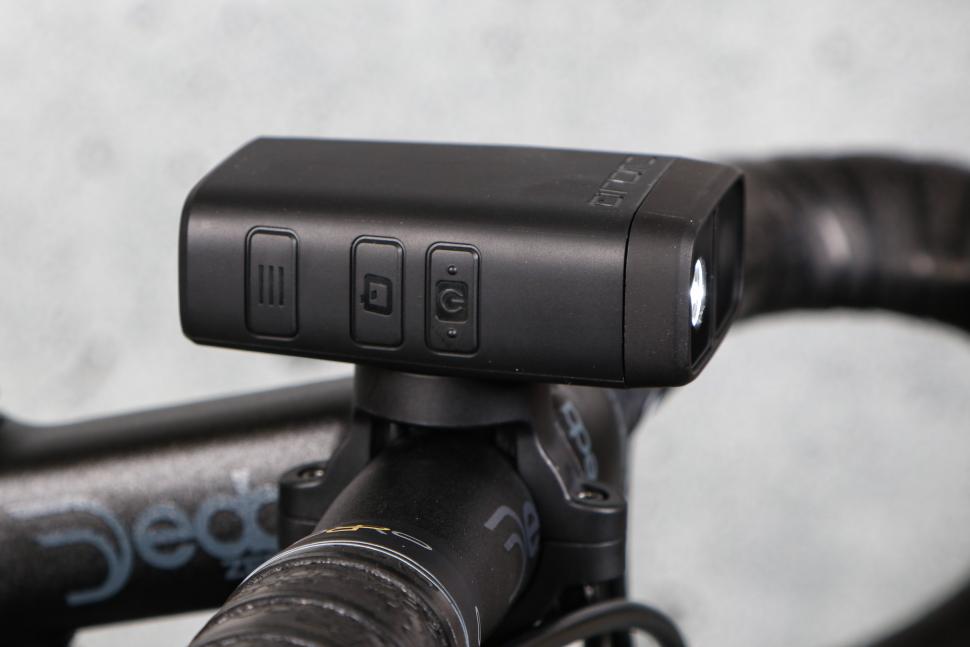
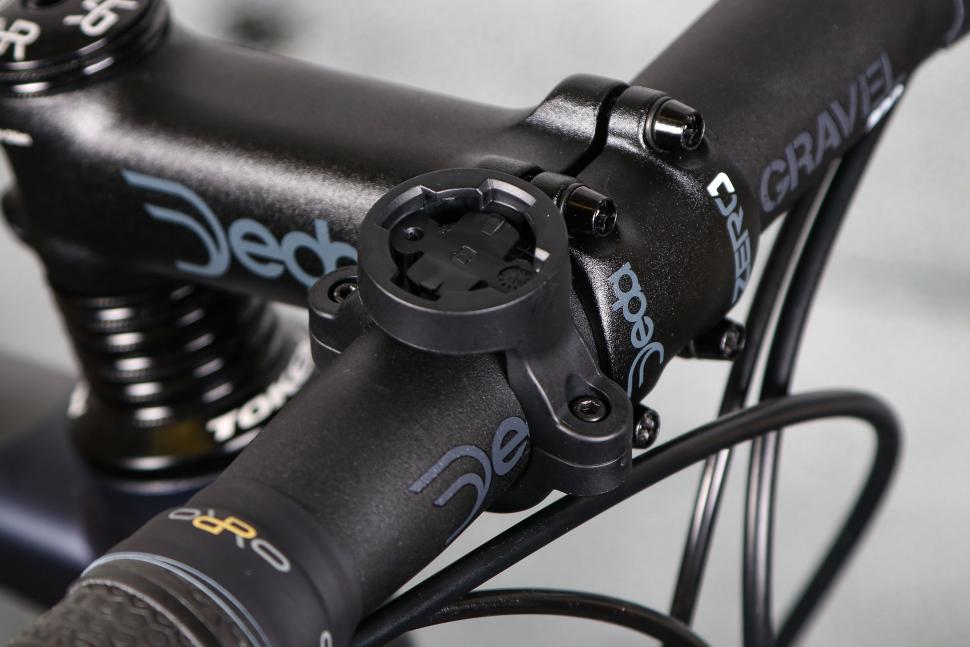
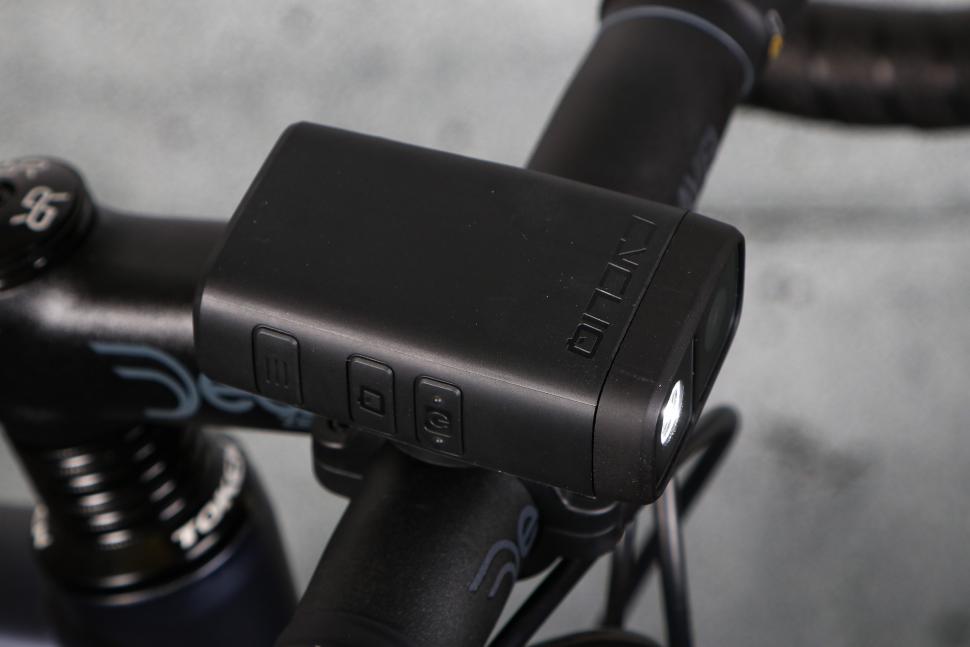
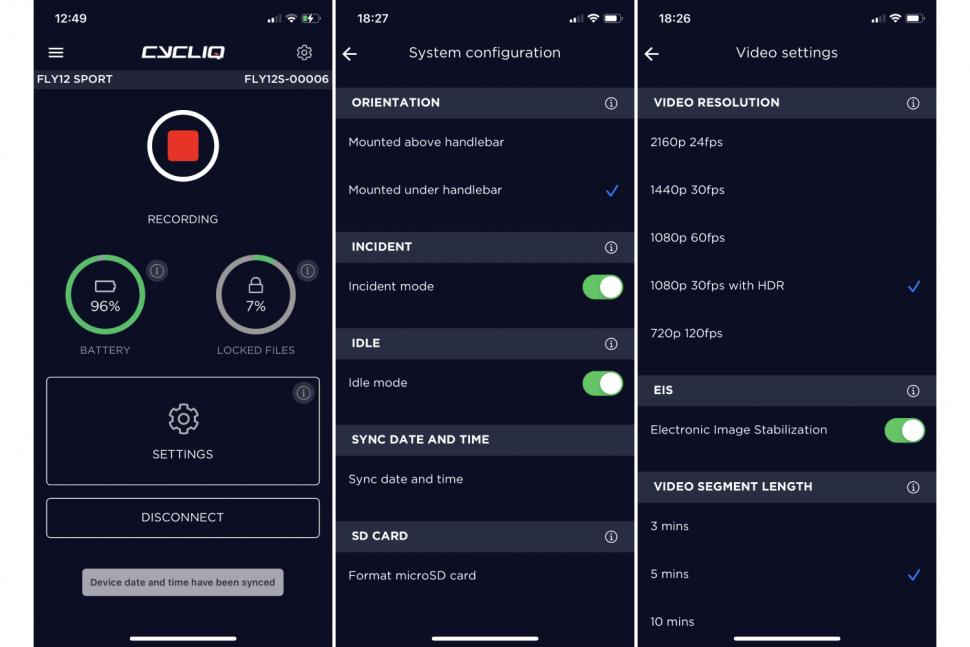
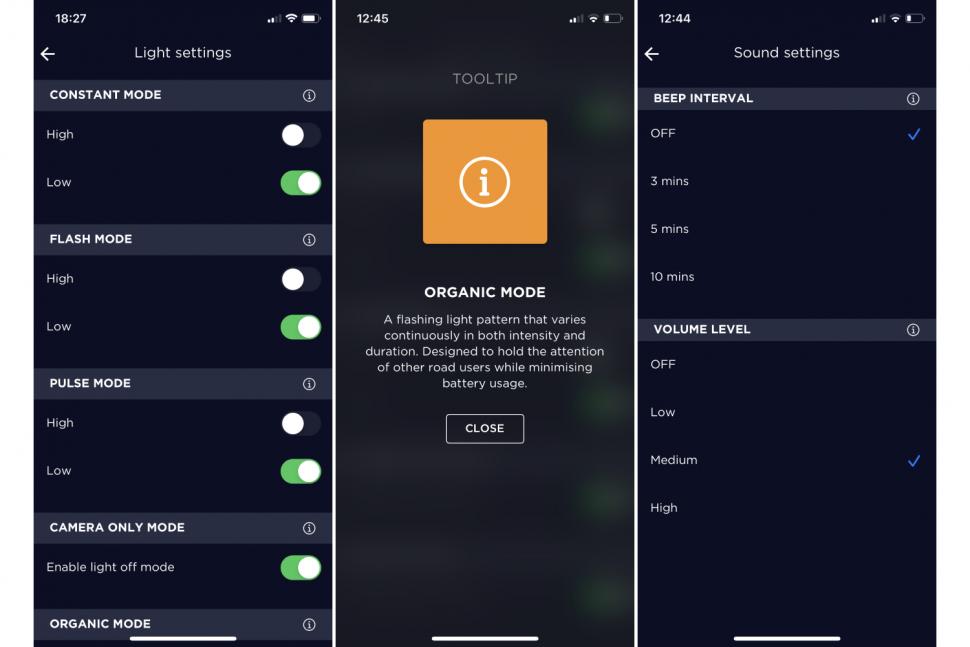

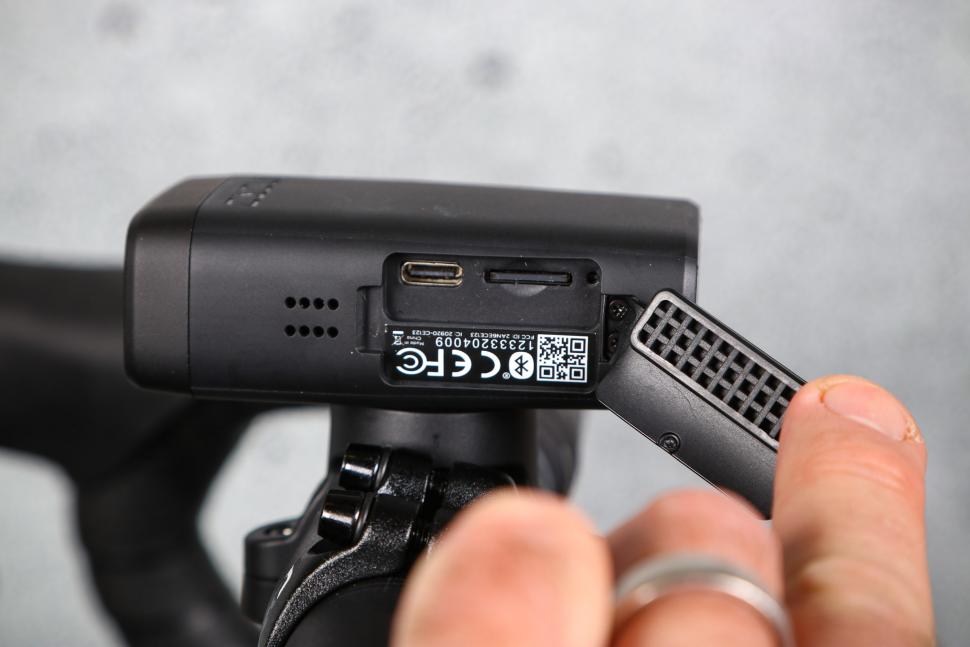


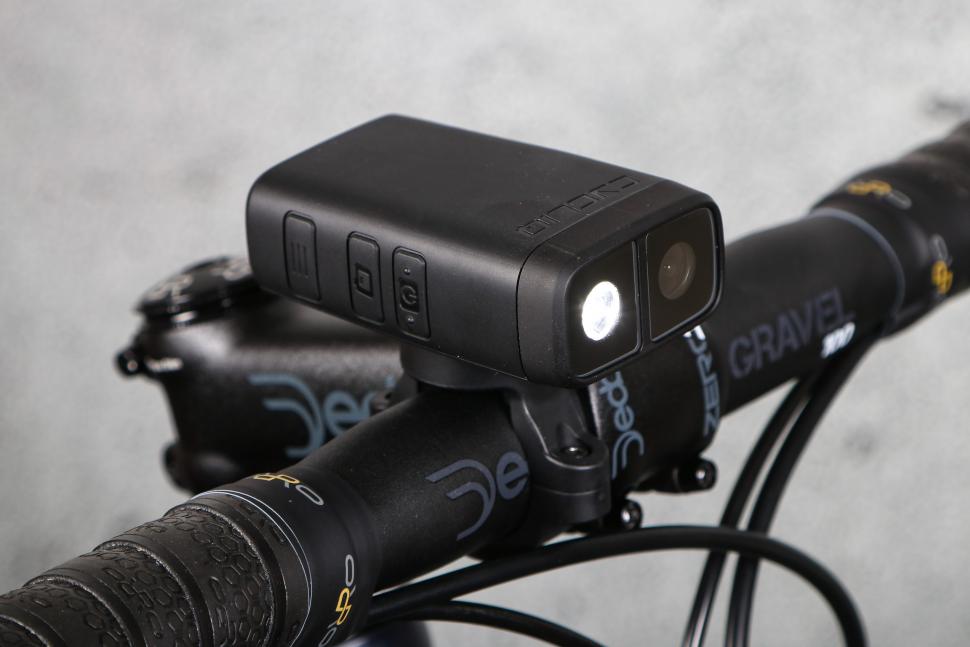


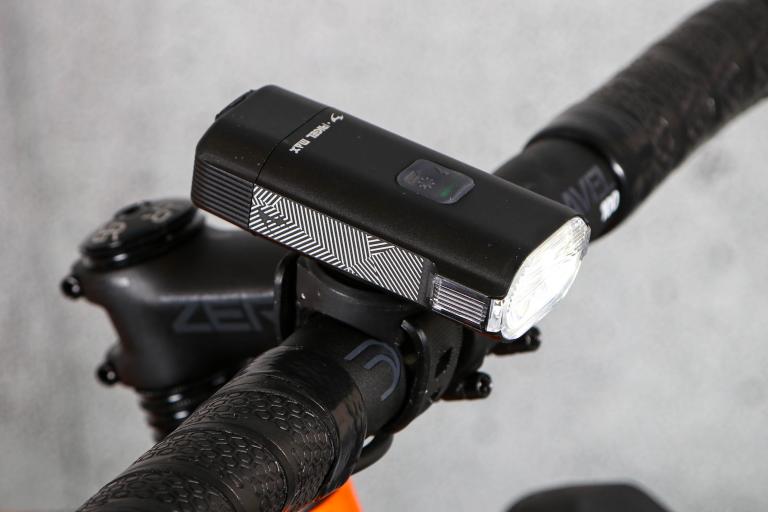
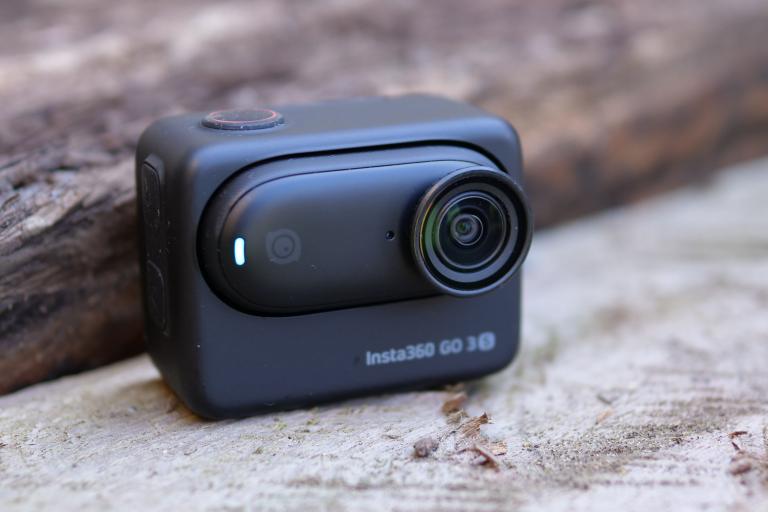
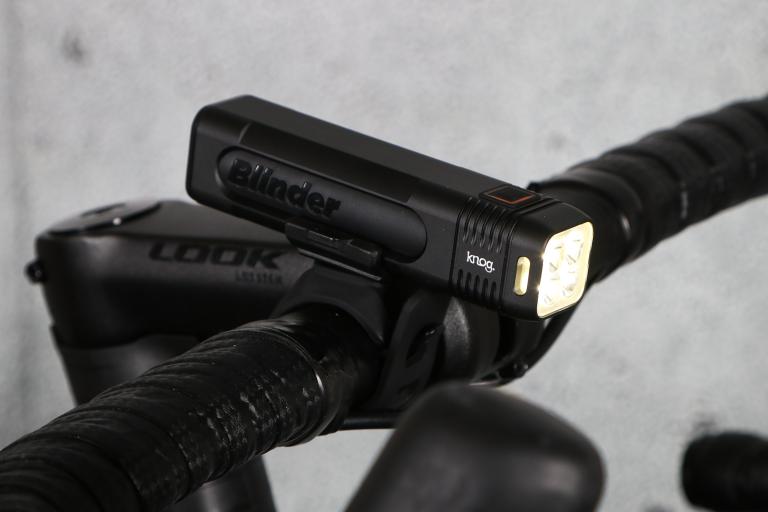
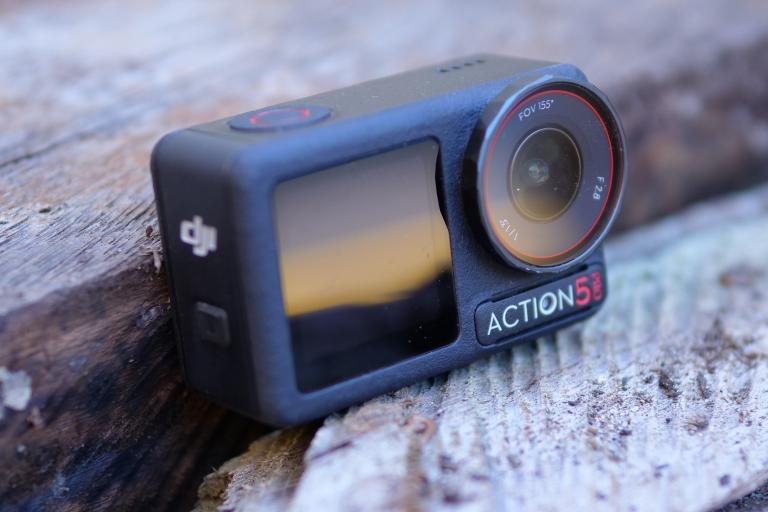
Add new comment
38 comments
My Cycliq cameras have been pretty trouble free. Got the original Fly12 too and it's been rock solid. Must have done 10k miles with it over the years.
Also got a 2nd gen Fly 6. I did have an issue with the battery failing after 18 months. I did a DIY replacement with a pre-tagged Samsung 18650 cell and it's been almost rock solid since (several years).
I only recently started to find the Fly 6 would randomly shut down without warning. Turned out to be the SD card was knackered (they only have a limited number of read/write cycles). Put a new one in and it's back in business.
These are terrible products. Spend 2 minutes looking at reviews and you'll see just how bad they are. Speaking from my own experience, I've owned 3 units including the Fly6 and all have failed within a few months. Cycliq are also terrible to deal with, and actually (eventually) sent me a replacement that was DOA!
This new version is a downgrade in every respect on what was already a pretty shoddy product. This is a very bad review, classic from roadcc.
Not my experience. I had a fly12 and fly 6 from ebay second hand. Apart from some fiddling early on until I replaced the SD card they've been solid.
There is night and day between the 2 products
The only real criticism of the 12 has been the cheap plastic mount, otherwise the actual camera is pretty bombproof
The 6 has been the one with the issues, mainly waterproofing which is astonishing for a rear mounted sport camera, this is the one to avoid
I had the first generation for a while until it broke and I got a refund.
One thing I noticed was the light reflected off numberplates at night making them unreadable - maybe faffing around with the angle etc could have stopped this but then the light itself becomes less useful if not in the position you want.
I didn't want the light then or now - even the original 800 lumuen one wasn't all that. It's the massive battery life that attracted me. My commute and most decent ride are way too long for almost all cycling cameras unless you stop 2 or 3 times to change a battery - not gonna happen.
Ditch the light, put the battery back, reduce the price - job done
The worst thing about the new fly12 is that it's a down grade in almost every way from the previous model apart from image quality, which if you're going for a dash cam for cyclists isn't an issue. Less battery life, lower grade light. Smaller form factor sure, but if you can cope with 1080 max previous model is superior imo.
Also, really wish they had a better system for battery changing as my fly6 has taken a sudden drop in capacity and I don't really fancy the cost of replacing it. My solution was to get a second light for the rear and turn off the light to extend battery. But only a temp solution for such expensive products. A genuine competitor in this space with user replaceable batteries could really clean up
I dont think the battery life as suffered much of a downgrade (if any) but I take your point.
Whomever is in product development at Cycliq seems obsessed with lower light specs and battery sizes. If I had to give up the light spec I'd still have rather had the same form factor and hence bigger battery life. The ultra high res modes seem a waste apart from offering EIS on HD mode.
I would seriously consider paying another 50-100 squids for the same specs + bigger battery in the old form factor.
Unfortunately it still seems to be in a product category of one - so very little pressure to innovate.
Or better still: legislatures could make selling such products with non-replaceable batteries illegal due to the environmental impact of such practices. That would certainly cause manufacturers to sit up and take notice.
Pages